Health Insurance for 2021
Are you looking for health insurance in 2021? There are three things you should keep in mind when searching for the best health insurance plan. Based on your health insurance needs, keep in mind the insurance network, plan type, and deductible options. We will talk more in-depth about these three factors today!

1) Health Insurance Network
When it comes to selecting a health insurance plan it’s important to ask the question “What kind of network will I have access to?”
So many times when purchasing a health insurance plan we get caught up in what the cost of the plan is and not necessarily what it is that we’re buying access to. When selecting a health insurance plan it’s important to make sure that you have access to the doctors that you want when it comes to providing you the medical care that you require. For example, you may be healthy today but if suddenly you develop a heart condition and want access to the Cleveland heart Institute only to find out they are out of network, this could be a serious problem for you and your health outcome.
When selecting a health insurance plan you’ll typically have three different options for provider/facility network. They are PPO, POS, and HMO.
Differences between each network:
- PPO – Preferred Provider Organization: A health insurance plan that has a PPO network will give you access to the largest network of physicians and specialists in the country. With this type of plan, you can pretty much go anywhere that you want without needing a referral from a primary care position. You’ll have access to out of state providers, but this is also the most expensive network.
- POS – Point of Service: This network offers a flexible network option that provides protection from higher out of network costs. This network is a blend between the PPO and an HMO, it typically offers lower premiums and in-network coverage of an HMO, but offers a greater deal of flexibility in the case of unexpected, complicated conditions at higher out of pocket costs.
- HMO – Health Maintenance Organization: This network is the most restrictive network of all health insurance plans. Typically, the network will be very narrow or be restricted to maybe only your state or a limited set of providers and will not have any access to out of network coverage unless it’s an emergency. these plans typically come with a lower cost, but only because they are so restrictive. HMO plans typically have NO out of network coverage.
2) Health Insurance Plans
The next choice you’ll have to make is the type of plan you want to offer. In 2021 there are traditional plans, High Deductible Health Plans, and Copay plans.
Here’s a quick overview of the differences between each type of plan.
- Traditional: Most consumers in the United States are going to be familiar with a traditional health insurance plan. This plan works on a system with copays or coinsurance and deductibles to help cover an individual’s medical costs. In the past, these plans would have low deductibles and low office visit copays but in 2021 we are seeing traditional plans with office visit copays of $40 to 50 and family deductibles up to $13,000 or more.
- HDHP – High Deductible Health Plan: These types of plans are gaining popularity and offer some tax benefits that other plans do not offer. Most consumers will pair this type of plan with a health savings account. In this scenario, your coverage will have a deductible that must be met before the plan provides any reimbursement. Typically there is no cost share and no copays and only after the deductible is met will the carrier start paying any of your medical bills.
- Copay Plan: These types of plans are fairly new and have recently come on the scene to shift the cost of health care expenses toward the consumer. In this new copay plan every service has a copay associated with it. The copay amounts will be different depending upon the level of office visit service, the level of specialist visit, the level of surgery, until your copay is reached a maximum out of pocket.
3) Deductibles
Lastly, as an educated consumer, you want to decide whether you want to purchase a deductible that is embedded, or non-embedded.
- Embedded Deductible: A plan with an embedded deductible means that on a family plan, any one person will not pay more than the individual deductible. These type of plans are going to be more expensive than a non–embedded plan.
- Non-embedded deductible: a non–embedded deductible will require any one person in your family or family total to reach the family deductible before the insurance company starts providing medical expense reimbursement. As an example, you may have a $4000 single and $8000 family deductible. In this plan, the $8000 family deductible must be met before the insurance company starts reimbursing your medical providers.
Recap
We hope this was helpful! However, we understand that health insurance can be confusing and there is a lot more that goes into it. If you have questions, our team would love to talk to you.
Thams Agency is an insurance agency that has been working with health insurance plans for more than 30 years. We live and breathe insurance and making sure people get the best insurance tailored to them. Call us at 712-263-3193 or reach out via email at team@thamsagency.com.

